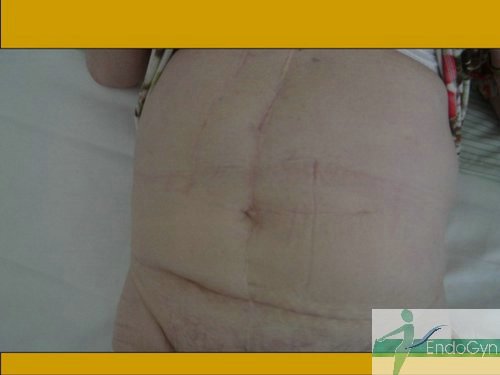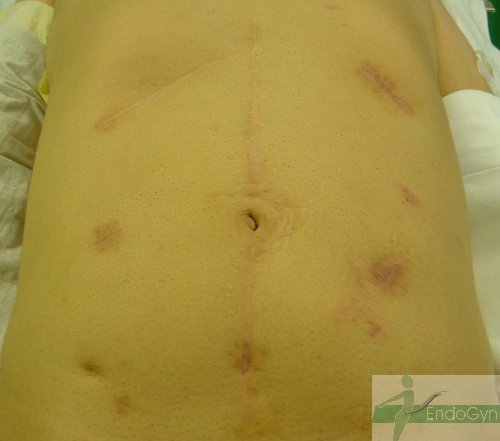Adhesions, a dilemma


Adhesions occure after 93% of all surgeries with laparotomy
For every 100 procedures there will be 10 readmissions within the
first year following open surgery on the reproductive tract.
Data taken from SCAR study
***************************
Please take a look how humans are mutilated and deformed through avoidable laparotomies.
please avoid a laparotomy in any circumstance!
In 99 % of all benign diseases in our hands a laparoscopic intervention is possible.
www.Bauchschnitt-Nein-Danke.de


















Very rare, but a severe complication occures, if the laparotomy incision gets infected. Such kind of infections have to be left open. With every day desinfectional local treatment for several weeks the wound closes itself by a so called "secondary healing".


Adhesions lead to many readmissions (Brief Article)
In the first epidemiologic study of its kind, investigators in the Surgical and Clinical Adhesions Research (SCAR) study have shown that postoperative adhesions are directly related to a substantial number of hospital readmissions and result in a high rate of complications with potentially significant long-term consequences. Reporting in a recent issue of the Lancet, Ellis and associates urge that greater emphasis be placed on identifying surgical procedures with a high risk of adhesion-related complications and on assessing proposed adhesion prevention strategies.
Using the Scottish National Health Service medical record linkage database, the SCAR investigators identified 29,790 patients who underwent open abdominal or pelvic surgery in 1986 and had not had similar surgery in the previous 5 years. Over 10 years' follow-up, one in three (34.6%) of these patients was readmitted because of a disorder directly or possibly related to adhesions or for abdominal or pelvic surgery that could potentially be complicated by adhesions. Overall, 10,326 patients had one or more readmissions, totaling 21,347–a mean of 2.1 readmissions per patient.
Of the 21,347 readmissions, 1,209 (5.7%) were classified as directly related to adhesions, and 8,240 (38.6%) as possibly related to adhesions. The greatest percentage of all readmissions occurred in the first year after surgery (22.1%), but readmissions continued steadily thereafter.
Midgut and hindgut surgeries accounted for the highest percentage of readmissions directly related to adhesions (7.3%) and the highest rate of readmission (5.1 readmissions per 100 initial procedures). According to the investigators, strategies to prevent the formation of adhesions should be implemented during these procedures.
The authors also demonstrated the potential long-term effects of adhesions. In 1994, in the total database population of 5 million, they found that 4,199 individuals (5.6% of all 67,017 admitted for any reason that year) had adhesion-related admissions and 48,664 (64.7%) were admitted for causes possibly related to adhesions.
Ellis H, Moran BJ, Thompson JN, et al. Adhesion-related hospital readmissions after abdominal and pelvic surgery: a retrospective cohort study. Lancet. 1999;353:1476-1480.





